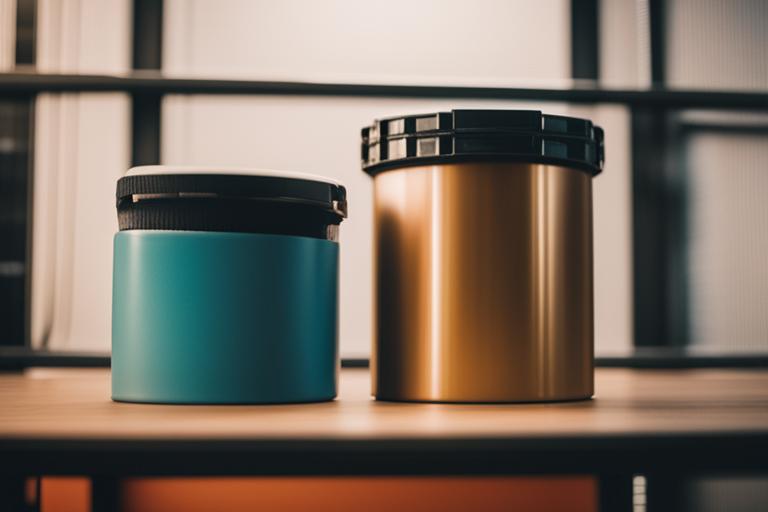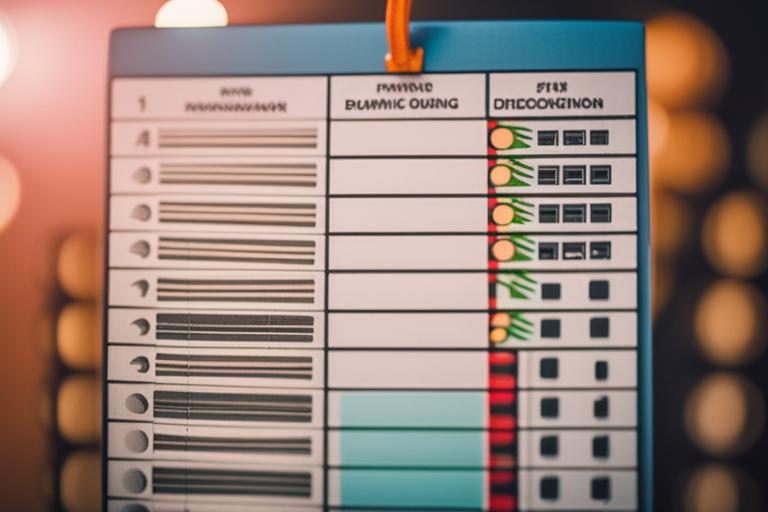Are you struggling to decide between drum and flat containers for your shipping and storage needs? Understanding the differences between these two types of containers can help you make an informed decision. In this guide, we’ll explore the materials used to create these containers and provide practical tips on how to maximize storage space and safely transport your products.
Choosing Between Drum and Flat Containers for Shipping and Storage
By reading this article, you will learn:
– What drums and flats are, the types of materials used, and their common sizes and shapes.
– The differences in uses, types of materials and products stored, advantages and disadvantages, and cost comparison of drums and flats.
– Factors to consider when choosing between drums and flats, tips for using them effectively, and their environmental impact.

What are Drums and Flats?
Drums are cylindrical containers commonly made of steel, plastic, or fiber. They are designed to store and transport liquids, powders, and other bulk materials. Flats, on the other hand, are flat, rectangular containers typically made of steel or plastic. They are often used to store and transport heavy equipment, such as machinery or vehicles.

Materials Used in Drums and Flats
Drums can be made of various materials such as carbon steel, stainless steel, and aluminum. Carbon steel drums are the most commonly used and are ideal for storing and transporting non-hazardous materials. Stainless steel drums are resistant to corrosion and are suitable for storing and transporting hazardous materials. Aluminum drums are lightweight and ideal for air transport.
Flats are typically made of steel, which is durable and can withstand heavy loads. Some flats are also made of plastic, which is lightweight and can be used for storage and transportation of smaller items.
Drums vs Flats: Purpose
Drums are ideal for products that need to be contained and transported safely, such as hazardous chemicals or food-grade materials. They are often used to store liquids, such as chemicals, oils, and fuels. Flats, on the other hand, are best for products that are too large or heavy for other types of containers. They are often used for transporting industrial equipment, such as heavy machinery, vehicles, or construction materials.
Drums vs Flats: Cost Comparison
The cost of drums and flats can vary depending on factors like material, size, and quantity. Drums can be more expensive than flats, especially if they are made of steel or fiber. However, the cost of a drum can be offset by its durability and longevity. Flats, on the other hand, are typically more expensive than other types of containers due to their size and the materials used in their construction.
Purchasing containers in bulk can often result in a lower cost per unit for both drums and flats. Additionally, choosing a container made of a less expensive material, such as plastic, can also help reduce costs.
Drums vs Flats: Strength and Durability
Strength and durability are important factors to consider when choosing between drums and flats. Drums are often designed with a reinforced structure that can withstand the weight of heavy liquids. This makes them ideal for storing and transporting hazardous chemicals or food-grade materials. Flats, on the other hand, are designed to support the weight of heavy equipment and machinery.
When it comes to durability, both drums and flats can be designed to withstand harsh environments and extreme temperatures. Steel drums, for example, are often used in industrial settings because of their ability to withstand corrosion and damage from impact. Plastic drums, on the other hand, are lightweight and resistant to chemicals and UV light.
Drums vs Flats: Storage Space
When it comes to maximizing storage space, flats are typically easier to stack and store. Flats are flat and rectangular, which makes them easier to stack. Drums, on the other hand, are typically cylindrical in shape, which can make them difficult to stack and store efficiently.
To maximize storage space for drums, it’s important to stack them in a way that ensures they won’t tip over or become unstable. For flats, stacking them in a uniform pattern can help maximize storage space.
Drums vs Flats: Environmental Impact
The environmental impact of drums and flats is another important factor to consider. Drums can be made of a variety of materials, including steel, plastic, and fiber. Each material has its own environmental impact, with some being more eco-friendly than others.
Flats are typically made of steel, which is a highly recyclable material. However, the weight and size of flats can make them less environmentally friendly than other types of containers.
When choosing between drums and flats, it’s important to consider the environmental impact of each option. Choosing a container made of a recyclable material, such as steel or plastic, can help reduce the environmental impact of your shipping and storage operations.

Hazards of Using Drums and Flats
Using drums and flats can be hazardous if not handled properly. Hazards can include leaks, spills, and damage to the container during transportation. To avoid these hazards, it’s important to follow best practices such as:
- Properly labeling containers to ensure they are handled and stored correctly
- Inspecting containers for damage before use to prevent leaks or spills
- Using the appropriate type of container for the product being stored or transported
- Properly securing containers during transportation to prevent damage or spills

Choosing the Right Container
When choosing between drums and flats, consider factors such as purpose, cost, strength and durability, storage space, and environmental impact. For liquids and powders, drums are typically the best option. For heavy equipment and machinery, flats are the go-to choice. Both drums and flats can be cost-effective depending on the material and quantity. Strength and durability are important factors to consider, especially for hazardous materials or heavy equipment. Storage space and environmental impact should also be taken into consideration.
Case Study: Choosing between Drums and Flats for Shipping Chemicals
When Sarah, the owner of a small chemical distribution company, was tasked with choosing between drums and flats for shipping their products, she was initially unsure which option to choose. Concerned about the safety of her products and the cost of shipping, Sarah decided to conduct a trial using both containers to determine which was the best option for her business.
After testing both drums and flats for several months, Sarah found that while flats were less expensive, they were less durable and more prone to damage during shipping. Drums, on the other hand, were more expensive upfront, but their durability and strength made them a more reliable option for shipping chemicals.
Sarah also found that drums took up more storage space than flats, but by organizing them in a specific way, she was able to maximize her storage space and minimize the overall impact on her warehouse.
In the end, Sarah decided to choose drums for her shipping needs, as they provided a more secure and reliable option for her business. She also implemented best practices for using and maintaining her drums, which helped her reduce costs and ensure the safety of her products.
This case study highlights the importance of conducting a trial and considering multiple factors when choosing between drums and flats for shipping and storage.
Conclusion
Choosing the right container for your shipping and storage needs is crucial to ensure safe and efficient operations. By understanding the differences between drums and flats and following best practices for handling and transporting the containers, you can ensure a successful outcome. Whether you choose a drum or a flat, make sure it’s the right container for the job.
| Container Type | Typical Size Range | Typical Capacity Range |
|---|---|---|
| Drums | 5-55 gallons | 20-250 liters |
| Flats | 20-53 feet | 20-45 tons |
FAQs
Q. What is the difference between drum and flat brakes?
A. Drum brakes use shoes to press against a rotating drum, while flat brakes use pads to press against a flat rotor.
Q. Who should choose drum brakes over flat brakes?
A. Drivers who prioritize durability and low maintenance costs may choose drum brakes.
Q. How do drum brakes compare to flat brakes in terms of performance?
A. Drum brakes generally have less stopping power and are more prone to overheating than flat brakes.
Q. What are the benefits of choosing flat brakes over drum brakes?
A. Flat brakes provide better stopping power, are less prone to overheating, and offer easier maintenance.
Q. How does the cost of drum brakes compare to flat brakes?
A. Drum brakes are generally cheaper to manufacture and replace, making them a more cost-effective option.
Q. What if I need to tow heavy loads with my vehicle?
A. For towing heavy loads, flat brakes may be a better choice due to their superior stopping power and durability.
Follow us!!